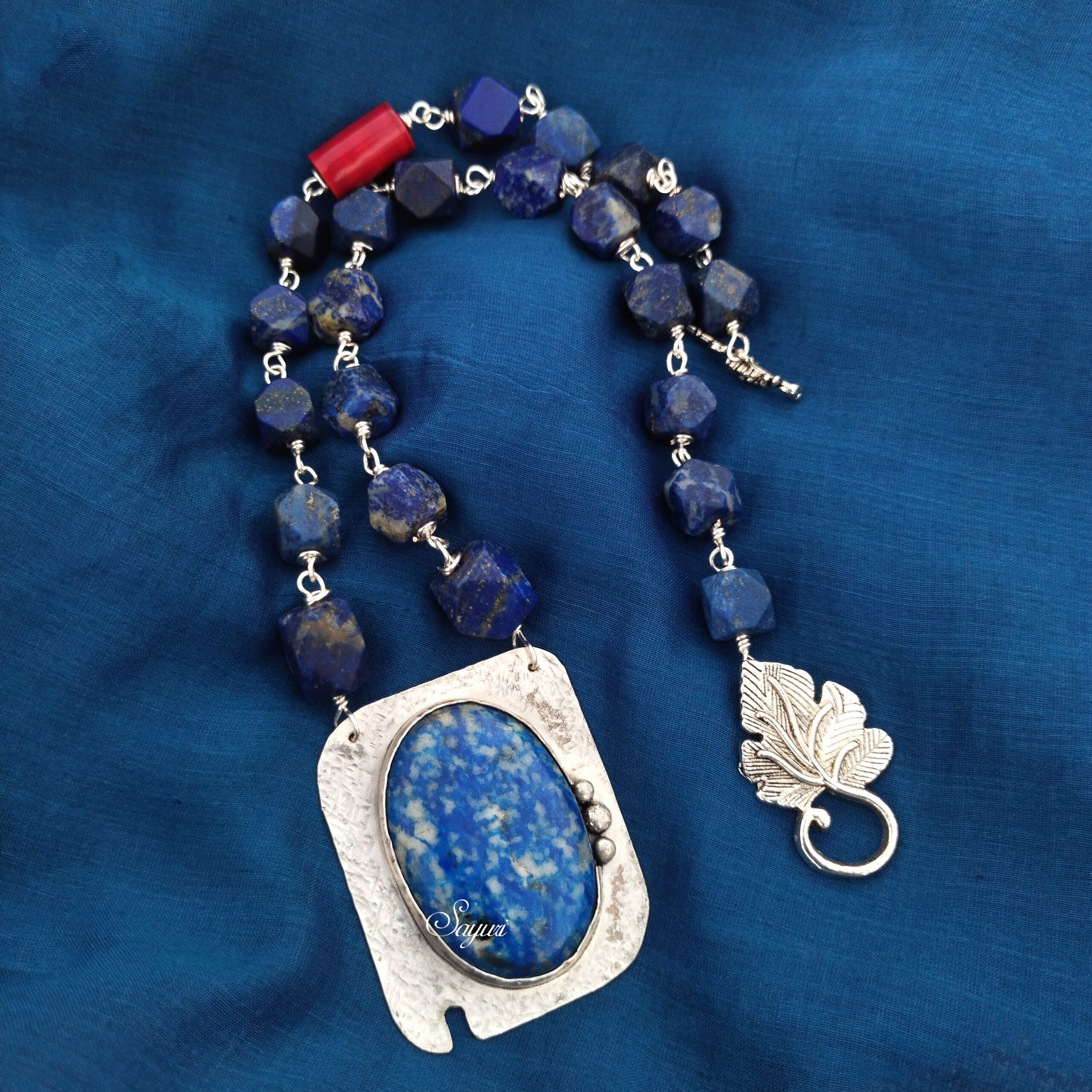I love translucent gemstones and have done so ever since I was a child. I have spent several hours looking at pictures of large gemstones, imagining what it would be like to hold them in my hand. After all, imagination is free. But the first opaque gemstone that drew me in, just by its name, was Lapis Lazuli. I came across it in the sixth standard Social studies textbook. I remember, sitting on the last bench with my back to the wall saying “Lapis Lazuli” repeatedly as though I was in a trance. The textbook did not have a picture, and I never knew how the gemstone looked. I only knew that it was prized for its intense blue colour. However, I fell for it. Incidentally, Lapis lazuli is also the name of the apartment in Bengaluru, where I started Sayuri and launched my brand and business.

What is Lapis lazuli?
Lapis lazuli is a deep blue metamorphic rock that has been prized for its intense colour and durability for thousands of years. The name comes from the Latin word “lapis,” meaning stone, and the Persian word “lazhuward,” meaning blue (or sky). Azul is another word for blue that sounds similar. The gemstone has been mined in Afghanistan for over 6,000 years. It was highly valued in India and was worn in the Indus-Saraswati civilisation as early as 3300 BC. In ancient Egypt, lapis lazuli was believed to have healing properties and was used in medicine and cosmetics. It was also used in the creation of beads, scarab beetle cabochons and funeral masks.
Lapis lazuli has a Mohs hardness of 5.5 to 6, making it relatively soft compared to other gemstones. This means it can be easily scratched and should be handled with care. Lapis lazuli is composed of several minerals, including lazurite, calcite, and pyrite. The blue color comes from the lazurite mineral, which contains sulfur and sodium. White is the calcite host rock and the golden flecks that you see are pyrite. The more the white streaks, the less valuable the stone is. See other gemstones in blue here.

Use in art
Lapis lazuli has been used as a pigment for centuries, and artists highly valued it during the Renaissance. The pigment is made by grinding the stone into a powder and then mixing it with a binder, such as oil or water. It was also ground into a powder to make ultramarine pigment, which was used to create blue paint for fine art. The pigment was used to create a brilliant, deep blue colour that was often used for painting the robes of the Virgin Mary and other religious figures. Johaness Vermer, used to borrow money heavily to buy ultramarine, which he used liberally. His “The Girl with a Pearl Earring “is painted with a mixture of ultramarine and lead white, with a thin glaze of pure ultramarine over it.
The largest lapis carving in the world is the Tomb of Jahangir in Lahore, Pakistan. The tomb is decorated with intricate carvings made from over 30 tons of lapis lazuli.

Lapis lazuli jewellery
Lapis Lazuli is also the first gemstone, that I bought with my own money (after pearls). I bought a big slab at Mount Abu, in Rajasthan in 2012 and set it in a silver to make a pendant in 2016 when I attended Beadfest. The pendant is in the shape of the letter “D” (as in for Divya) and at its heart a Lapis Lazuli. After waiting for several years, I found the right strand of hexagonal lapis beads only in 2021. I bought it from Sarah Corbett at the Virtual souk. Since the pendant is heavy, I wire wrapped the beads and added a red lac coated wooden bead for a pop of colour. I made it into a necklace in 2022 and I wonder why I have not shared it earlier.

Here are a pair of copper and lapis lazuli earrings that I made years ago and wear often. Find the tutorial for the earrings shown below, made using copper tongue cleaners that I shared in 2019.

Lapis lazuli has been associated with spirituality and enlightenment for centuries. Furthermore, it is often used in meditation and crystal healing practices. I hope you enjoyed learning more about the stone and its connection to me. Do you wear or own lapis or use it in your work. Tell me in the comments. I will share more such gemstone stories in the future.
I hope you find it interesting
Cheers



What do you think?